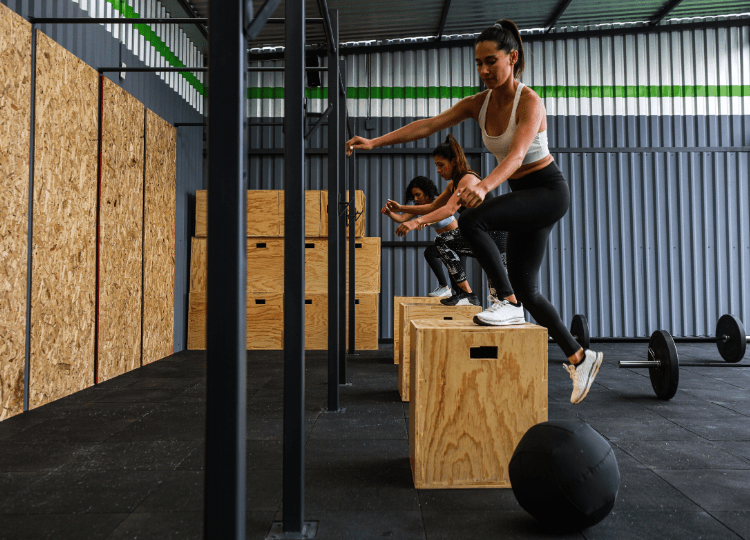Starting over at a new gym can feel like walking into a high school cafeteria mid-semester—you don’t know where to sit, who’s watching, or whether the protein shake bar is actually worth the markup. For some, that leap is exciting. For others, especially those carrying stress, anxiety, or past gym trauma, it takes everything not to turn right back around in the parking lot. The good news is, gyms are evolving. You don’t need to settle for fluorescent lighting, meathead energy, or a space that leaves you feeling worse than when you arrived.
The right gym isn’t just about treadmills and towels. It’s about mental reset. Physical grounding. Feeling like your body belongs to you again. That’s the standard now—so hold it.
Energy Matters More Than Equipment
You can walk into a place with the fanciest setup on Earth, but if it reeks of judgment or feels like everyone’s in a silent competition, it’ll tank your motivation faster than a bad playlist. It’s not about whether the equipment is new or the towels are eucalyptus-scented—it’s about how you feel in your own skin while you’re there.
Watch how staff treat people. Are they welcoming without being fake? Are there people of all body types, ages, and experience levels genuinely working out, not just posing for social media? If it feels more like an airport lounge than a sweat-friendly space, it’s probably not the one.
The atmosphere should breathe with people actually focused on themselves—not on each other. A good gym empowers you to do your thing, your way, without the static of comparison buzzing in your ears.
Your Mental Health Isn’t a Side Note
Exercise helps mood, period. But that’s only true if your gym doesn’t quietly chip away at your self-esteem. Mental health and physical health aren’t separate silos—they’re in constant conversation. And for a lot of people, walking into a gym is already layered with internal noise: body image issues, fear of looking clueless, sensory overload, even past disordered eating habits that flare in high-performance environments.
Some gyms get this. They’ve stopped shaming people into pushing harder and started designing programs and environments that restore a sense of agency and calm. Look for spaces that offer wellness coaching, trauma-informed instructors, quiet zones, or classes that blend movement with breathing and mindfulness. Places where personalized plans actually mean tailored support, not just a one-size-fits-none spreadsheet.
You don’t need a cheerleader screaming affirmations in your face. You need a place where you feel safe to move how your body needs to move—where effort counts more than optics.
The Details Speak Volumes
You can tell a lot about a gym from the “extras,” and not in a snobby way. Does the layout consider people who want to train without being stared at? Are there clean locker rooms where you’re not afraid to touch the bench? Can you find classes that aren’t just designed for 22-year-olds with a dance background?
And then there’s the golden ticket: the gym membership. Yes, that phrase comes with baggage—but it’s changing. The best ones don’t trap you in contracts or hike prices when you’re not looking. They offer flexible tiers, trial periods, and clear communication. Some even build in mental health support or perks like meditation rooms, child care, or nutrition consultations—because they know your well-being isn’t just a 45-minute sweat session.
When a gym respects your time, your wallet, and your boundaries, that’s not luxury. That’s the bare minimum.
Trainers Who Actually Listen
A good trainer can shift your whole relationship with exercise. A bad one can leave you feeling bruised—physically and emotionally. You want someone who sees the whole you, not just the muscles they want to build. That means they ask questions, respect injuries or sensitivities, and don’t treat you like a blank slate to be whipped into shape.
Beware of trainers who push “no pain, no gain” or try to sell you on supplements before learning your name. The best coaches understand that growth takes time, and not everyone’s chasing the same kind of progress. If someone makes you dread going to the gym, they’re not a good fit. You should leave sessions feeling seen, not scolded.
Look for gyms that allow trainer meet-and-greets or trial sessions. And don’t feel bad about asking for someone who specializes in mental health-informed fitness or has experience working with specific needs like postpartum recovery, chronic illness, or body image issues. That’s not being picky—that’s being smart.
The Way You Feel Afterward Matters Most
You shouldn’t feel like collapsing from shame when you leave a workout. Tired, sure. Sweaty, yes. But mentally wrecked? That’s a hard no. Pay attention to your body after a session, not just your muscles. Do you feel clear-headed? Calmer? Stronger in ways that aren’t about reps or run times?
Good gyms help your nervous system settle. They give you space to move at your own pace, encourage consistency without guilt, and leave you feeling more rooted—not like you just survived something. Whether you’re lifting heavy, stretching slowly, or trying to walk off a rough week, your gym should feel like a space that helps, not hinders.
If you start leaving the gym with a sense of peace—even a quiet one—you’re in the right place.
Where It All Comes Together
Finding a new gym can stir up a lot—doubt, nerves, even grief if you’re returning after a rough health patch. But it can also be a reclamation. A reminder that you’re allowed to take up space, move without apology, and make choices based on how you feel, not how you look.
Don’t let flashy marketing or old-school pressure steer you. The right gym meets you where you are. And from there, you get to build something sustainable—something yours.
